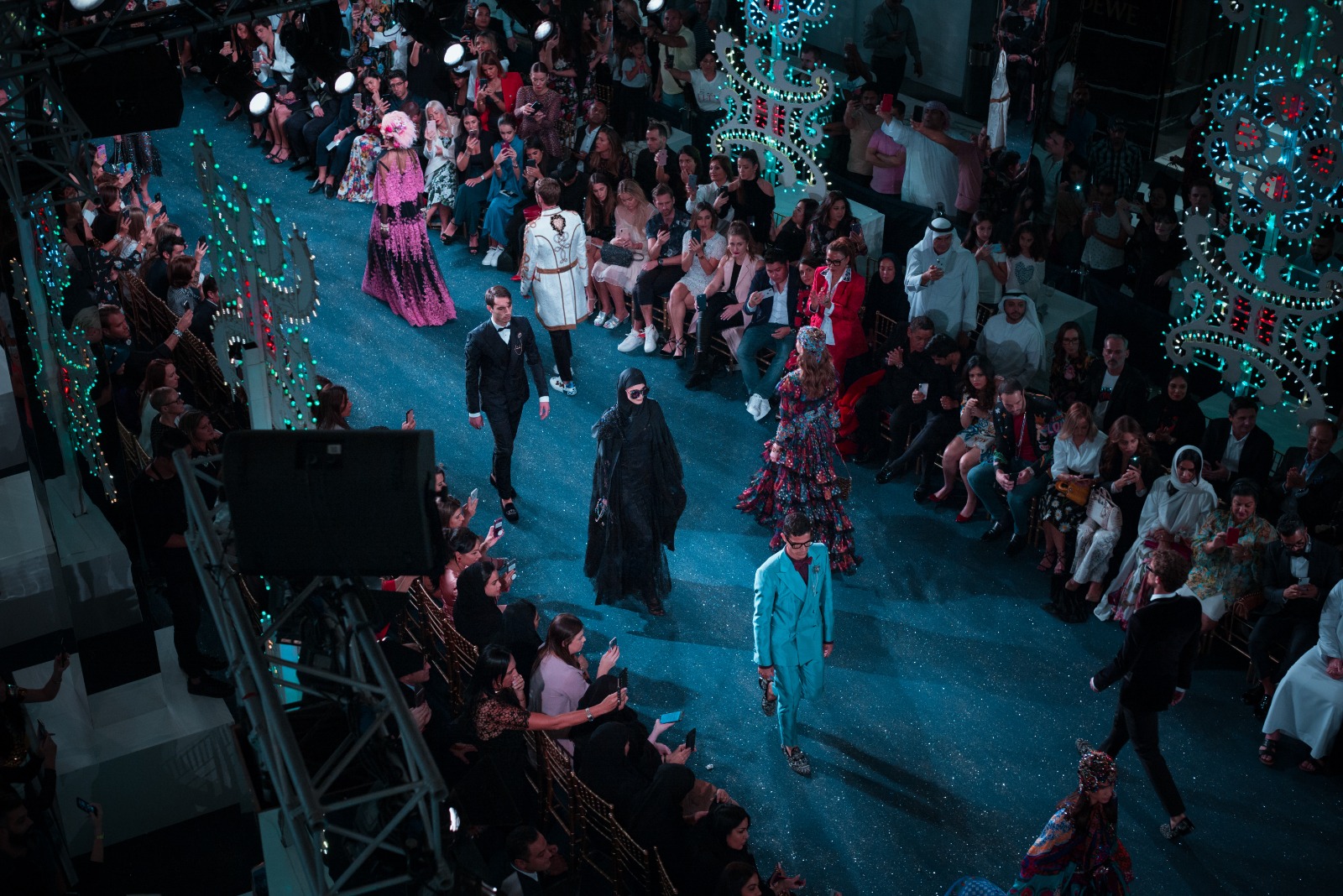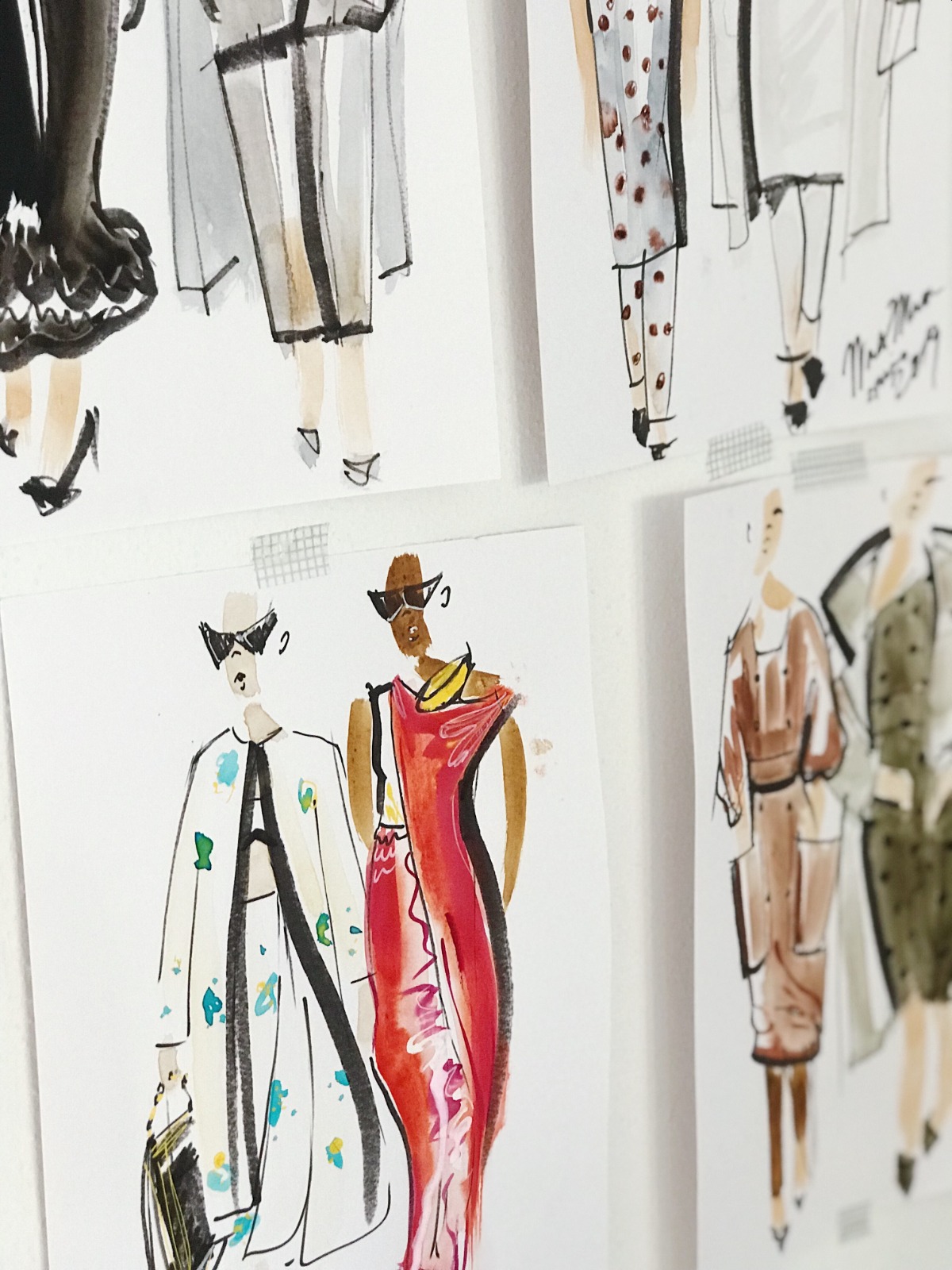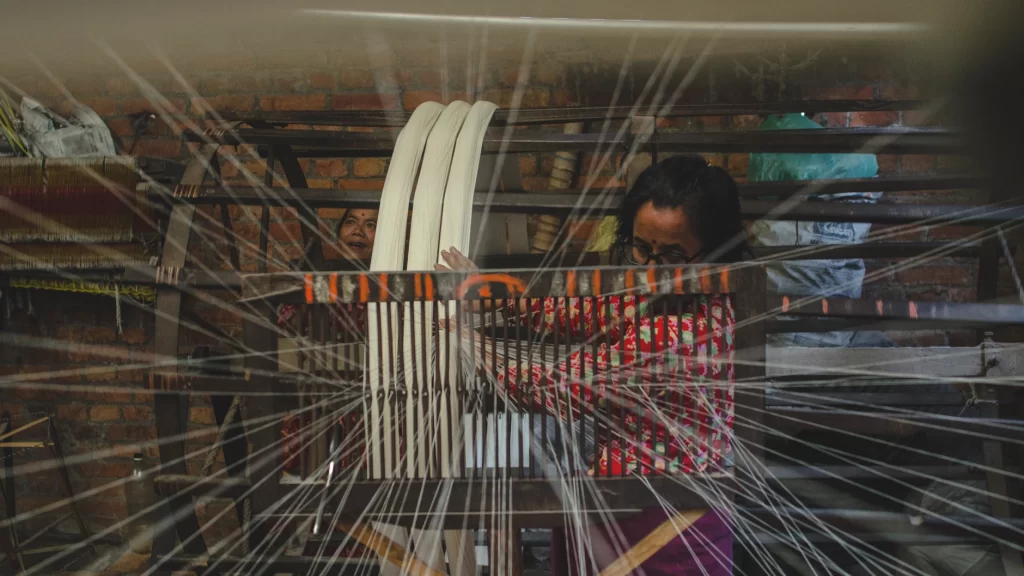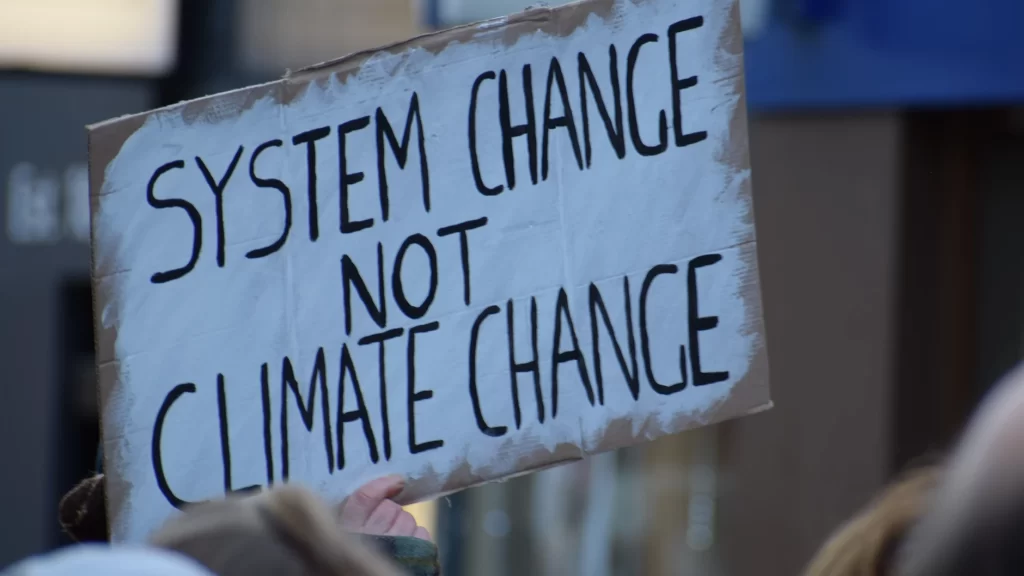As the curtain falls on yet another fashion week season, the dazzling lights dim, and the glamour momentarily recedes, let’s take a moment to pause and consider the impact of the bi-annual fashion show circuit. I have been attending fashion weeks ever since I was a design student and these events were our windows into understanding the industry’s pulse and aspirations. However, our current landscape, marked by a growing awareness of the fashion industry’s ecological impact and the pressing need for rapid intervention in the face of climate crisis, the question looms large: Do fashion weeks still serve a purpose, and can they evolve to become a catalyst for sustainability in the fashion industry?
Understanding the fashion industry’s carbon footprint
The global fashion industry, a US $2.5 trillion enterprise, employing over 75 million people worldwide, is responsible for 10% of global carbon emissions and 20% of global wastewater, leaving behind a substantial environmental footprint. Amidst this scenario, fashion weeks have found themselves in the crosshairs of criticism, primarily due to their wasteful practices and, resultantly, their own considerable carbon footprint. Hundreds of people–celebrities, buyers and industry stakeholders–traverse the globe on carbon-emitting planes, to witness runway shows characterised by carefully orchestrated moments and elaborate sets, which are often discarded after the show. According to a 2018 report jointly released by Zero to Market, Ordre.com, a fashion technology company, and Carbon Trust, a climate change consultancy, a single year of fashion events measured by the activities of 2,697 retailers and 5,096 ready-to-wear designers released approximately 241,000 tons of CO2 into the atmosphere. We do not have a more recent version of data to know the post-pandemic impact, but Extinction Rebellion has been calling for the cancellation of (London) fashion week, for a few years now, citing the wasteful consumption of resources and excessive emissions. Fashion councils and organisers of fashion shows have taken cognizance of this growing call for change and are taking steps towards reimagining fashion weeks with the integration of technology and virtual runways, and the promise of carbon neutrality. The Swedish Fashion Council even cancelled the Stockholm Fashion Week, in 2019, to ‘explore more sustainable options’.

Should fashion weeks exist?
Historically, fashion shows have served as platforms for designers to unveil their creations, connect with buyers, court the favour of the press to reach their consumers, and shape the industry’s trends. Fashion weeks are not just stages for visual splendour; they function as cultural epicentres where trends are born, and industry insights are unveiled, providing a strategic roadmap for businesses. In the context of their role today, industry members advocate for a transformation in the way fashion weeks are conceived, designed and produced, to align with sustainability goals and promote sustainable consumption.
Calls for sustainability do not equate to stifling creative freedom but rather invite a reimagining within the framework of new realities. “Let them exist for trade, to honour craft, to foster good business and provide dignified livelihoods globally, not for spectacle and superficiality alone,” says Orsola de Castro, co-founder of Fashion Revolution. As sustainability takes centrestage during fashion weeks, the question that lingers is whether these events are truly harnessing their full influence to answer the growing demands for a more responsible and ethical industry–from the event’s physical structure to its intangible impact on the overarching trajectory of the fashion industry.
Carbon-neutral fashion weeks: Where do we stand today?
The term ’carbon-neutral’ has become a fashionable catchphrase amongst fashion shows and brands. Do we truly know the extent of a fashion show’s carbon footprint? Amidst a myriad of variables—location, participants, materials, food and beverage, stage sets, travel and more—the precise calculation remains elusive. In the absence of this data, it’s challenging to understand how carbon emissions are calculated, what aspects of the fashion show are included in the calculation, and how emissions are being mitigated.
Although fashion shows are increasingly live-streamed, leveraging technology to extend the reach of collections and significantly reduce the total CO2 emissions associated with virtual events (less than 1% of a traditional in-person event), physical events still rely on conventional materials and methods. The opulent show sets, meticulously designed by luxury brands for just a brief appearance on the runway, often meet their fate in landfills after the show concludes. The marketing materials, such as the flex sign boards, are intended for one-time use. These events may be fleeting, but the waste they generate has a lasting environmental impact. The choice of materials for props, stages, runways, and food containers plays a crucial role in determining the carbon footprint, circularity, and recyclability of the items used in these events. Opting for sustainable, recyclable, or upcycled materials can help reduce the environmental impact of fashion shows, while reliance on unsustainable or single-use materials can contribute to a larger carbon footprint and generate more waste. Copenhagen Fashion Week’s sustainability assessment revealed that one of the most carbon-intensive aspects, following international flights, was the production of 100 branded T-shirts for staff, prompting them to a shift to unbranded timeless designs which can be reworn.

It is also essential to question whether some of these items are even necessary. For instance, are printed invitations or bands, even if they are biodegradable or recyclable, essential? Could the entire production process be designed with mindfulness to minimise unnecessary waste and environmental impact from the outset?
The problem with ‘carbon neutrality’ is that it often centres on offsetting emissions rather than insetting. Offsetting is centred around paying third parties to address the climate impact of your event while insetting focuses on addressing the core issues of waste and emissions within the event. If organisations are genuinely committed to embedding carbon neutrality at their core, every choice they make should prioritise the environment. This calls for transparency and accountability to ensure these events are not mere showcases for greenwashing.

Beyond the event: The intangible impact
Fashion shows, while bearing a minuscule fraction of the direct climate impact compared to the overall fashion supply chains, wield significant indirect influence over the industry. They play a pivotal role in driving, shaping and forecasting production and consumption trends. Each fashion week, beyond its 15-minute runway spectacles, offers a unique vantage point into the prevailing macro trends that mould the global fashion landscape, dictating consumer behaviour and generating media value, all of which amplifies their environmental footprint. Rachel Arthur, of the UN, aptly labels this phenomenon as the ‘brainprint’ of fashion shows: The ripple effect of a runway presentation on consumer behaviour. Rachel further questions what fuels fashion weeks. ‘At the heart of fashion’s negative environmental and social impact is overproduction and overconsumption,’ she says. ‘And what do fashion weeks do if not fuel both those things?’ Could the core tenets of fashion weeks be shaped to eradicate messages of overconsumption and redirected to meaningful consumption and production?
Reimagining fashion weeks as catalysts for sustainable consumption

Inspiring sustainable design collections and defining sustainability
Fashion Weeks can play a pivotal role in charting the course towards sustainable collections by designers and fashion brands. Copenhagen Fashion Week and Helsinki Fashion Week have made significant strides in encouraging designers to integrate sustainability into their core mission. Copenhagen Fashion Week has mandated that the designers must adhere to 18 specific sustainability criteria to secure their spot on the runway. These requirements encompass practices such as refraining from destroying unsold garments from previous collections, ensuring that a minimum of half the showcased pieces are crafted from sustainable materials, and committing to utilising their platforms for educating consumers about their sustainability initiatives. By setting concrete requirements, this approach helps establish a shared framework for sustainability in the absence of a universally agreed-upon industry standard.
A platform for innovative solutions
Fashion weeks have the potential to transform from mere showcases into dynamic platforms fostering meaningful conversations and initiatives that revamp consumption patterns. Consider London Fashion Week’s introduction of a clothes swap, where attendees actively engaged in exchanging garments, shedding light on the virtues of rewear and reuse, while actively combating waste. Fashion weeks can be a platform to champion innovative and sustainable solutions, elevating the next generation of designers who are committed to eco-friendly practices.
Initiatives like the Circular Design Challenge by Lakme Fashion Week shine a spotlight on designers pioneering eco-friendly approaches—exploring new materials, recycling and repurposing, and fostering a circular economy. From runway shows crafted from algae to collections fashioned from innovative materials like Banofi (banana leather) and upcycled chip packets transformed into sunglasses and jewellery, these groundbreaking endeavours give a glimpse into the future of sustainable fashion. The 11:11 showcase at Lakme Fashion Week was an ode to artisanal roots, nature-based solutions, and the creation of a memorable impact without extravagant sets. They collaborated with UNESCO to incorporate ‘madurkathi’ reed mats on the runway, celebrating the traditional craftsmanship of West Bengal. Instead of traditional models, the makers who created the clothing took the runway, and the props used were sourced from the artisans’ workspace.

Lead with collaboration
Systemic change takes time, and while progress has been made, there’s still much work to be done as we tackle the state of climate emergency. Fashion weeks have an opportunity to reinvent themselves and become pioneers of sustainable consumption and production. This includes sharing the reporting of carbon emissions, working with brands, designers, stage vendors, food vendors, to ensure the fashion shows are built around sustainability from the get-go.
It’s important to emphasise that the responsibility for this monumental shift cannot rest on the shoulders of a single organisation alone. Fashion shows are viewed as catalysts of change, possessing the power, resources and influence required to propel sustainable transformation within the industry, in collaboration with all its stakeholders. To ensure sustainability transcends mere trendiness, it’s the determined decision making and dedicated work behind the scenes that truly makes a difference.






